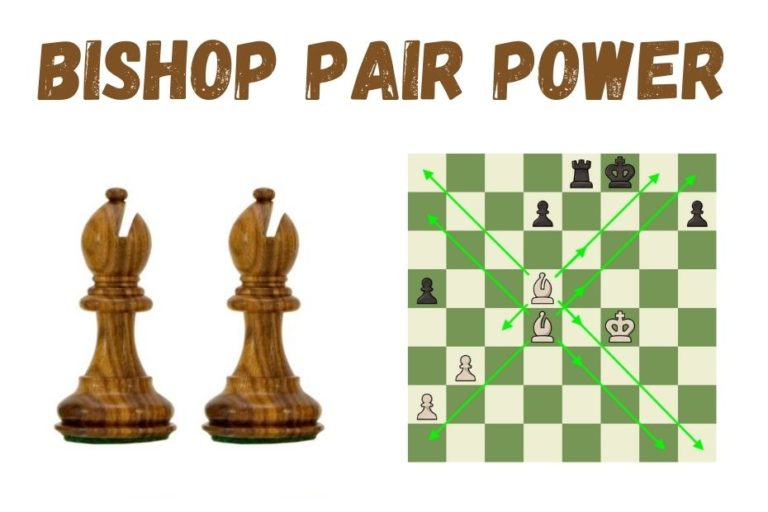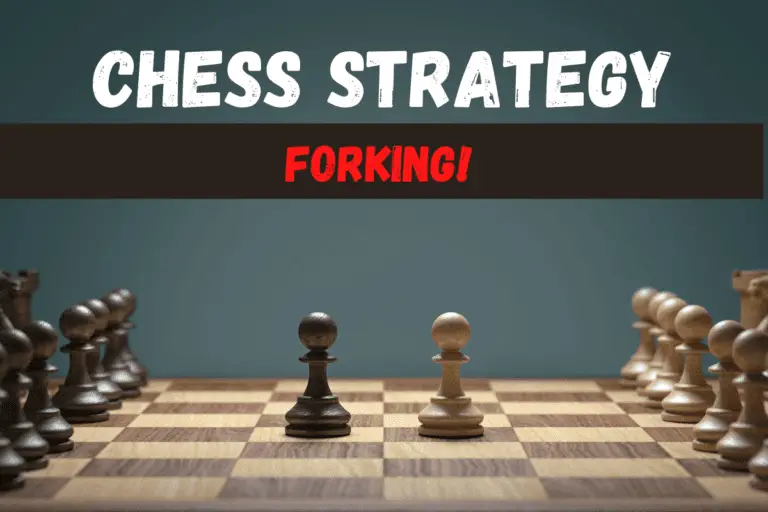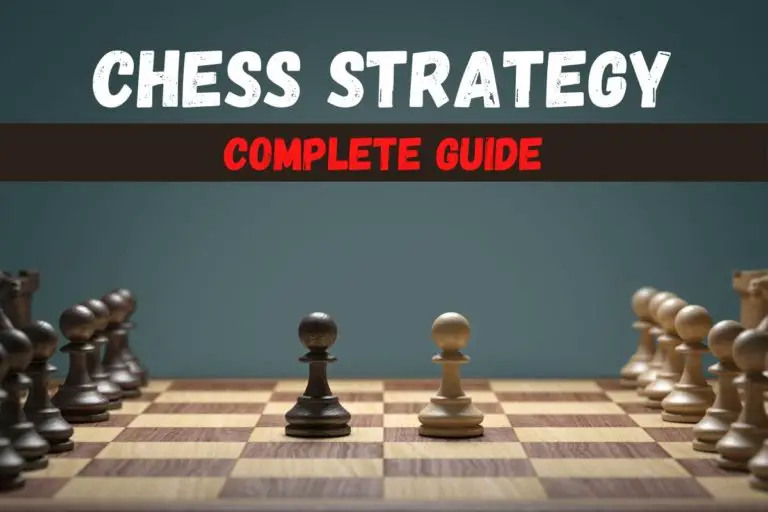When to Offer a Draw in Chess – And When to Accept
⭐⭐⭐ Take 6 minutes to read and improve your chess game ➡️ : This article was first published on, and is Copyright of Chessquestions.com
When is it the right time to offer, accept or decline a draw in chess games? This article will discuss when you should and shouldn’t offer a draw. It also offers some helpful advice on how to politely handle this situation if one arises.
There is a general perception that a draw is often a good result for both players. No one loses and no one wins. Both go home peacefully. But when should you offer a draw to your opponent?
A draw in chess should only be offered when it is your turn before you press the clock to your opponent’s turn. This is in the FIDE rules of chess so that your opponent’s thinking time is not impacted by consideration of the draw offer.
Obviously, offering a draw in a winning or in an advantageous position isn’t very smart.
But sometimes, even in equal positions, you should refrain from making a draw offer. This is one of the secrets of Magnus Carlsen’s success. How can you use it in your game? We will cover all of this in this article.
Let’s start with the basics first, before we move on to the advanced psychology of when to accept a draw and when you shouldn’t.
Draw by Agreement
When one player offers a draw to their opponent, and that offer is accepted, the game is ‘Drawn by Agreement’. Both players have mutually agreed that neither of them can fight for a win and they’d like to end the battle peacefully. Once agreed a draw offer or acceptance can not be retracted.
The players end up with a half-point each, after such a result.
The Tricky Etiquette of Draw Offers
This one is tricky and even a lot of advanced players get this wrong. If you offer a draw in the wrong way, you could be penalized if the opponent claims it. The right way to offer a draw is –
● Before playing your move, offer your opponent a draw. You can use phrases like – “I offer Draw” or “Offer Draw” or “Draw?”. Whisper gently so as to not disturb the other boards.
● Then play your move and press the clock.
Now it’s your opponent’s turn to think about your offer. Remember it’s important to offer a draw in your time and on your move. This is the legal way.
On the other hand, some players offer a draw, when their opponent’s clock is ticking. This is the wrong way. The opponent has the right to call the arbiter and claim that the other player is disturbing them during their thinking time. The arbiter can give a warning and a 2-minute time penalty.
That’s why it’s important to offer a draw, only when it’s your turn.
The Right Way to Accept a Draw Offer
The proper etiquette to accept a draw is to shake hands and stop the clock. This was in the pre-Covid era. In the post-pandemic world, look at your opponent and simply nod your head. You can also say – “Ok, I accept the draw.”
There is another way as well. Professional players often play out the draw, instead of accepting it. So if there’s an endgame position, these players would willingly cooperate to exchange all the pieces and pawns until there are only two bare kings left on the board. This way, the position is drawn because of insufficient material to checkmate.
Another thing strong players also do is openly cooperate to make a draw. This often happens in theoretical draws, where both players are well prepared and know exactly how the game will end in a draw.
In one top-level chess tournament, Teimour Radjabov and Magnus Carlsen made a quick draw in this fashion. There are a lot of such examples you can find online.
Decline a Draw – The Correct Way
There are two ways to decline an offer –
● Decline by Responding – You can politely tell your opponent that you would like to play and say “Let’s continue”, “Let’s play”. It’s also okay to be blunt and just say “No”. Just make sure in doing so you don’t disturb the other players.
● Ignore the offer and make your move – You don’t pay any attention to the draw offer and move your piece as if nothing happened. It’s a bit disrespectful but it’s completely within the rules of the game. In fact, a lot of top grandmasters decline an offer in this fashion. It’s mostly because they are too focused on finding the best move, instead of thinking of the offer.
Now let’s talk about the strategy behind when you should offer a draw and when you shouldn’t.
When should you offer a draw?
It’s best to make an offer for peace in equal positions or slightly worse positions. The best times are –
Dead drawn endgames where neither side can make progress.
When you see the best option is going to lead to a draw by repetition or perpetual check or anything else.
In worse positions, hoping that your opponent accepts it. If your opponent accepts it, it is a good choice. However, if they don’t, then you have to continue playing.
When should you accept a draw?
Here are few cases where it’s okay to accept a draw –
● When the position is a dead draw where neither side has winning prospects, then it makes sense to accept.
● If you’re feeling physically fatigued. Magnus Carlsen once offered a draw in 5 moves because he wasn’t feeling fully fit.
● If you are in an inferior position and your opponent offers a truce. In inferior positions, the possibility of losing is greater than that of winning. So acceptance of a truce is fine.
● In time pressure it is okay if you accept a draw. The chances of making a mistake are higher.
● In certain tournament situations where you are guaranteed the top spot after accepting a draw.
However, to become a strong chess player, you need to be a good fighter. This often means accepting lesser draws.
When should you NOT offer a draw? When should you NOT accept an Offer?
In the following cases, you should refuse to make a draw –
● When you’re in a winning position. (This one is a no brainer)
● Play in Equal positions(Carlsen’s strategy) – In equal positions where there are still some chances left. This is one reason why Magnus Carlsen often refuses easy draw offers. He keeps playing, testing whether his opponent can hold equality.
In the World Championship Match against Anand in 2013, Carlsen often won games that were equal endgames. What allowed him to win was his ability to keep fighting in tough positions and ask nagging questions to Anand on every move.
You can implement this strategy in your games as well. Just keep playing even if the position is equal. You will be surprised how many chess players make a mistake in such situations.
● No Quick draws – Don’t make quick draws out of the opening. In such draws, you barely get to play the middlegame and endgame. This is one of the worst things you can do for your professional chess growth.
● Tournament Situation – A lot depends on the tournament situation. Let’s say you are playing a crucial match that will decide whether you win the tournament or not. In this situation, it’s important for you to score. Draw only gives you second place. To make matters interesting, if you lose the game, you will end up in 10th place. Would you go for glory or be content with the second place that is guaranteed on the draw?
It’s easy to say one thing here and do the other. But in order to start winning big chess tournaments, you will have to play with the mindset to win, removing any thoughts of draws from your head. This also means you run the risk of losing, but that’s the only way you will grow as a professional.
Kasparov, Fischer, Carlsen and almost every other player who dominated chess had this attitude.
Conclusion
I hope everything is clear to you on the topic of signing a peace treaty in chess. We’ve covered everything here, from the right etiquette to accept a draw to knowing when to refuse an offer.





![When to Fianchetto in Chess [Strategy]](https://chessquestions.com/wp-content/uploads/2021/03/fianchetto-featured-image-768x512.png)
